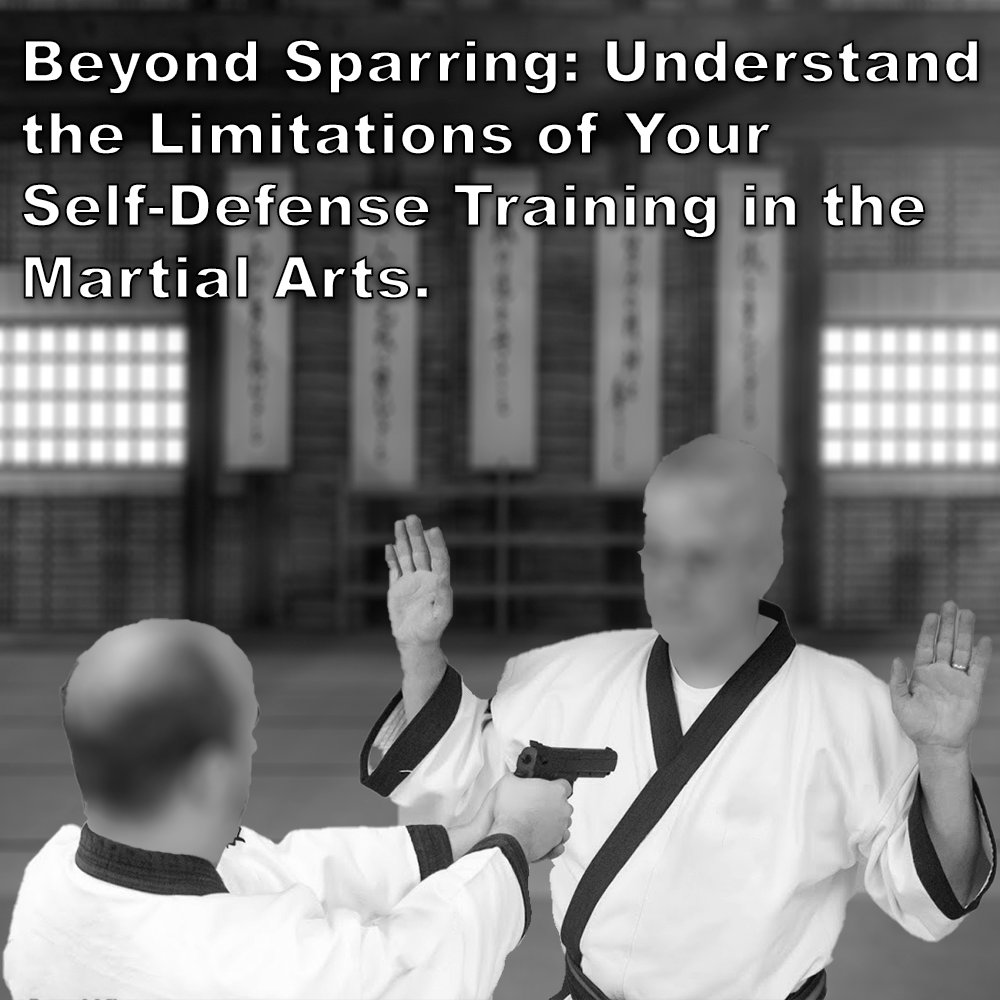
Beyond Sparring: Understand the Limitations of Your Self-Defense Training in the Martial Arts.
Posted by ADAM CARTER on OCT 21, 2024

Beyond Sparring: Understand the Limitations of Your Self-Defense Training in the Martial Arts.
(Approx 2 minute 40 second read)
While there are always exceptions, thankfully, most of us today rarely face the need to use physical self-defense.
Recently, someone commented on one of my articles, suggesting that sparring is the ultimate test of self-defense because of its unpredictability. While sparring does offer some unpredictability, it is nowhere near what a real-life self-defense situation looks like.
Throughout my life, I’ve had the unfortunate experience of facing several real-world confrontations – both as a civilian and in my career. From these encounters, I can tell you that most martial arts training is often a far cry from real-world self-defense.
Most schools teach ‘dueling’, not self-defense. And the truth is, it’s never like sparring. When you’re training with a partner who wants to learn with you or compete against you, it’s a completely different experience from defending yourself against someone who wants to stop at nothing to achieve their goal.
Criminals don’t play by the rules. They use whatever tools they can to make their job easier. I’ve faced weapons several times, and I can assure you, no amount of training takes away the fear when you’re confronted with a deadly threat.
I’ve previously written about dojo that teach ineffective knife defense, but what about those that claim to teach gun defense? Many of these schools fail drastically, as gun defense is far beyond the remit of a martial arts school.
Before we dive in, let me be clear – if you’re looking to learn how to defend yourself against a gun, a martial arts school is not the best place to start, no matter how they promote themselves. Training in a dojo can only take you so far.
Now, imagine this: You’re staring down the muzzle of a pistol held at point-blank range. The assailant says, “I’m going to blow your ******* head off. Give me the keys to your car and your wallet.”
Hesitating and wondering what to do next places you in even more danger. While maintaining distance is the best defense, when that’s not an option, you usually have three choices:
1. Comply – Hand over your belongings and hope they spare your life.
2. Panic – Freeze, react wildly, or act without focus because your mental and physical training haven’t prepared you for this moment.
3. Act – Initiate a pre-trained disarming technique, understanding that it’s a life-or-death decision.
Attempting to disarm someone with a gun is a high-risk, last-resort decision. A firearm is the ultimate force equalizer. And even for someone with years of training, it’s a terrifying proposition. In most cases, handing over your wallet or car keys is the smartest decision – give up your material possessions if it means walking away with your life.
In my opinion, the only time you should fight an armed assailant is if you truly believe they intend to kill you. If they’re just after your wallet, give it to them. Nothing is worth risking your life over.
A gun changes the dynamics of any confrontation. No amount of martial arts skill guarantees you can defend against it. Your chances of surviving a physical encounter with an armed attacker depend on many unpredictable factors, and relying on those odds is a dangerous gamble.
Real-world self-defense is not glamorous, and it’s certainly not like sparring in the dojo. Why so many people still view self-defense this way is beyond me. Facing an armed assailant – especially someone with a firearm – is one of the most dangerous situations imaginable.
No amount of martial arts training can fully prepare you for that moment, and very few dojo train for such scenarios realistically. The best way to survive any confrontation, is to avoid the fight whenever possible. If you must fight, ensure that you’re properly trained – training that often goes beyond what’s taught in a typical dojo.
Written by Adam Carter – Shuri Dojo.
